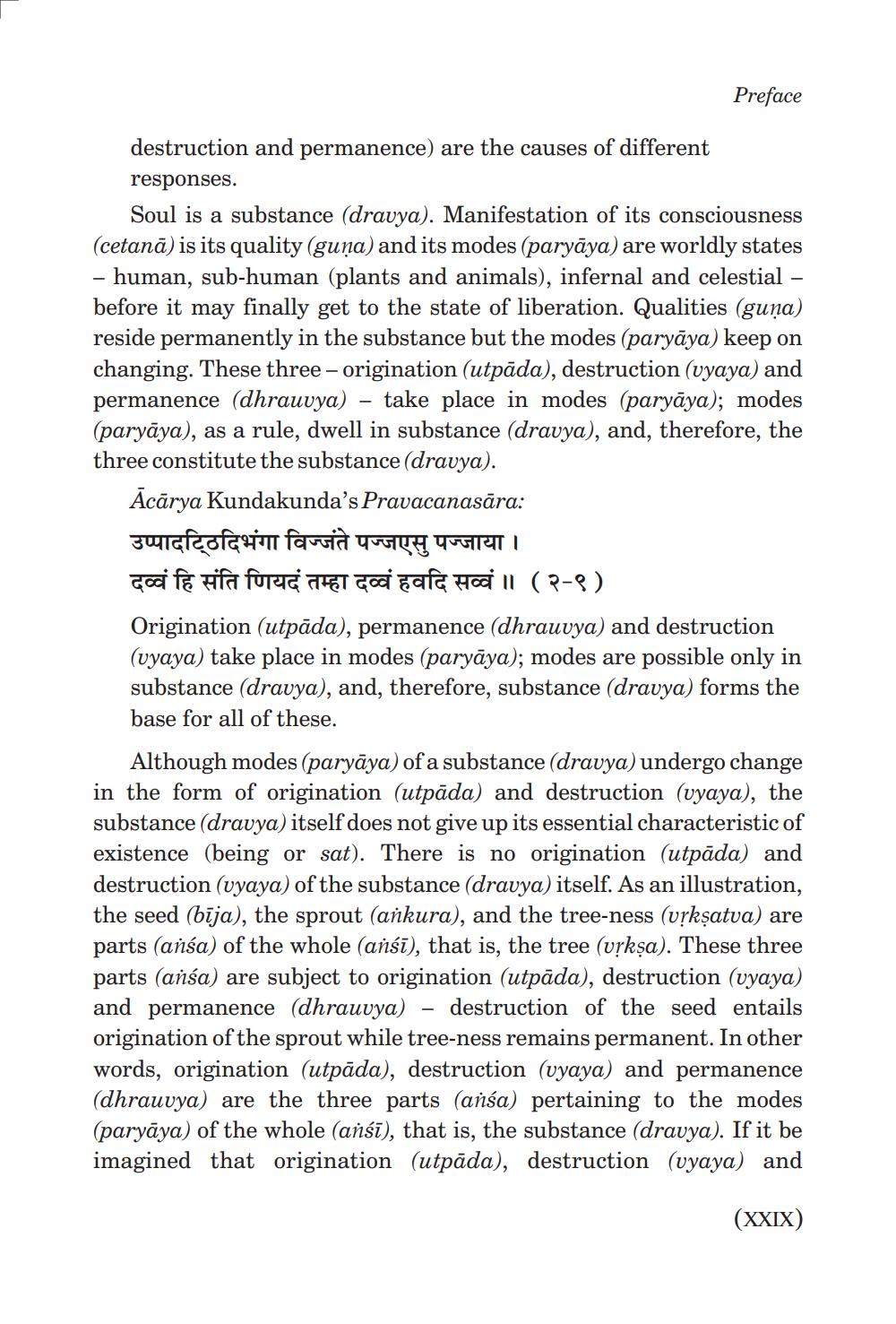________________
Preface
destruction and permanence) are the causes of different
responses.
Soul is a substance (dravya). Manifestation of its consciousness (cetana) is its quality (guna) and its modes (paryaya) are worldly states - human, sub-human (plants and animals), infernal and celestial - before it may finally get to the state of liberation. Qualities (guna) reside permanently in the substance but the modes (paryaya) keep on changing. These three - origination (utpada), destruction (vyaya) and permanence (dhrauvya) - take place in modes (paryaya); modes (paryaya), as a rule, dwell in substance (dravya), and, therefore, the three constitute the substance (dravya).
Acārya Kundakunda's Pravacanasāra: उप्पादट्ठिदिभंगा विज्जंते पज्जएसु पज्जाया ।
दव्वं हि संति णियदं तम्हा दव्वं हवदि सव्वं ॥ ( २-९)
Origination (utpada), permanence (dhrauvya) and destruction (vyaya) take place in modes (paryaya); modes are possible only in substance (dravya), and, therefore, substance (dravya) forms the base for all of these.
Although modes (paryaya) of a substance (dravya) undergo change in the form of origination (utpada) and destruction (vyaya), the substance (dravya) itself does not give up its essential characteristic of existence (being or sat). There is no origination (utpada) and destruction (vyaya) of the substance (dravya) itself. As an illustration, the seed (bija), the sprout (ankura), and the tree-ness (vrkṣatva) are parts (ansa) of the whole (ansi), that is, the tree (urkṣa). These three parts (ansa) are subject to origination (utpāda), destruction (vyaya) and permanence (dhrauvya) destruction of the seed entails origination of the sprout while tree-ness remains permanent. In other words, origination (utpada), destruction (vyaya) and permanence (dhrauvya) are the three parts (ansa) pertaining to the modes (paryaya) of the whole (ansi), that is, the substance (dravya). If it be imagined that origination (utpada), destruction (vyaya) and
(XXIX)
-




